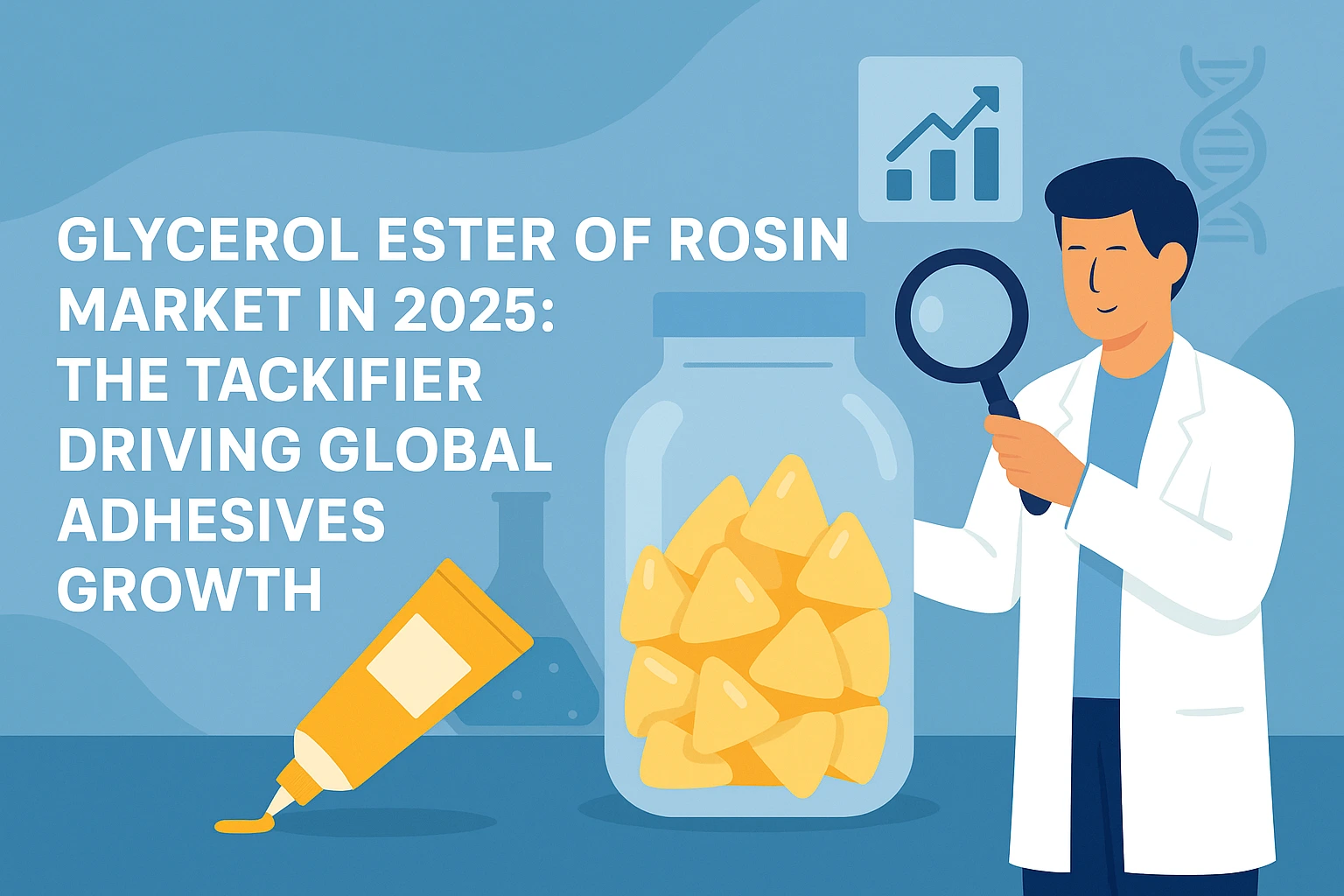1. Introduction: Glycerol Rosin Ester—Nature’s Versatile Tackifier
Glycerol esters of rosin, derived from pine-based rosin and glycerol, are established as essential tackifiers in hot-melt, pressure-sensitive, and water-based adhesives. Their unique chemistry provides cohesive strength, flexibility, and adhesion that synthetic alternatives struggle to match. As global adhesives demand approaches $50+ billion in value, these bio-based tackifiers find particular favor in industries racing to replace petroleum-derived inputs.
2. Market Growth, Industry Trends, and Global Demand
The global glycerol ester of rosin market is forecast to reach $3.7 billion by 2032, up from $2.5 billion in 2023, expanding at a CAGR of around 4.5–5%. Growth is strongest in Asia-Pacific—China, India, and Southeast Asia—driven by rapid industrialization in packaging, automotive, and construction sectors. North America and Europe contribute steady demand through regulatory pressure on volatile organic compounds (VOCs), resulting in rising adoption of low-emission, bio-based tackifiers. The overall rosin ester market benefits from trends in green chemistry, digital R&D, and consumer preferences for eco-friendly packaging and construction solutions.
3. Key Applications: Adhesives, Packaging, and Beyond
Glycerol rosin esters are valued most in:
-
Adhesives: Boosting adhesion in hot-melt glues, PSAs, and waterborne formulas for packaging, labels, construction, and hygiene products.
-
Coatings & Inks: Enhancing gloss, drying, and viscosity in printing inks/coatings for superior finish and performance.
-
Personal Care, Food, Rubber: Their biocompatibility and low toxicity drive use in chewing gum bases, specialty rubber, and food contact packaging materials.
Market data show growing trials in automotive, electronics, and sustainable packaging, as tailored rosin esters with UV stability and high molecular weight unlock new use cases.
4. Bio-Based Innovation & Regulatory Headwinds
Market leaders are launching high-performance, hydrogenated, and modified rosin esters with targeted properties—improving UV resistance, color, and thermal stability. Digitized R&D and partnerships are key to meeting certification and traceability requirements. However, the sector faces volatility in pine resin/rosin costs, logistic disruptions, and price competition from synthetics and other bio-based tackifiers. Regulatory drivers, such as VOC limits and food safety, are both a challenge and a catalyst pushing suppliers toward cleaner processes and novel products.
5. Supplier Landscape, Pricing, and Procurement Challenges
Competition is intense among global and regional players: Eastman, DRT, Kraton, Ingevity, Arakawa, and regional producers in Asia-Pacific expand capacity and invest in sustainability. Buyers in 2025 must scrutinize product specs, batch consistency, and supplier sustainability claims—especially as price swings in pine resin feedstock can impact costs downstream. Strategic procurement—locking in long-term contracts, sourcing certified bio-based rosin, and leveraging technical support—is critical for supply security and performance.
6. Conclusion: Market Outlook and Next Steps
Glycerol ester of rosin has secured its role as the adhesive industry’s preferred tackifier for the next decade, supported by regulatory, economic, and innovation tailwinds. Buyers seeking long-term value should prioritize agile, sustainable suppliers—ensuring reliable adhesion, regulatory peace-of-mind, and a pathway to the future of green manufacturing. if you are looking these products you can contact us.

Leave a Comment